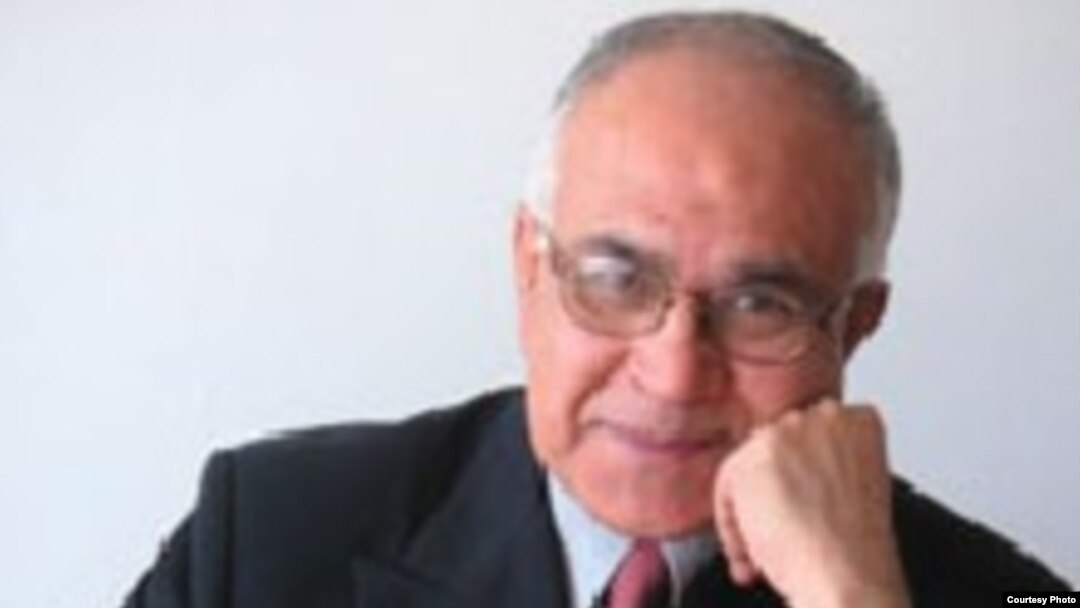RFE/RL: As the president of the Association for the Protection of Afghan Archeology and a man who dedicated decades of work to studying the Bamiyan Buddhas, how did you feel five years ago when you first learned that the giant statues had been completely destroyed by the Taliban as "un-Islamic"?
Tarzi: We didn't expect the Taliban to destroy the largest Buddha. When I saw on television that they had done this despite the pleas of UNESCO, I lost my temper. I took off my sandal and threw it at the television. I was so angry that I wanted to destroy the television.
RFE/RL: The site of Professor Tarzi's team's dig in Bamiyan (photo courtesy of Professor Tarzi)You have spent the four summers since the demise of the Taliban regime leading a team of French archeologists in a search for a third giant Buddha. This third statue is thought to be even larger that the 38-meter and 55-meter-high statues the Taliban destroyed.
Tarzi: The talk about a third Buddha is not new. Around 1975 or 1976, when I was still living in Afghanistan, I had studied the possibility of the existence of a third 'sleeping' Buddha. But I left the country before I could finish this work, and I didn't expect to ever return to Afghanistan.
RFE/RL: Why do you think there is a third giant Buddha statue at Bamiyan? What are the historic sources that have led you to that conclusion?
Tarzi: I am searching now for a Buddha that I think is about 300 meters long and was built in a sleeping or lying position -- [originally within a very large temple complex]. We have been able to locate the right temple, and excavations are continuing. This is not a small compound. So we have not been able to finish our excavations within a year or two. We need to be patient and do this the right way. The temple is about 1.5 kilometers east of the ancient royal city of Bamiyan. That temple was discovered by my archeological team. We are now studying the travel journal of a Chinese tourist from the year 632 A.D. to see if descriptions of a third giant Bamiyan Buddha are accurate. [Editor's note: The descriptions in that travel journal of the two standing Buddhas proved very accurate.] In archeological work, any expected result is never a 100 percent guarantee. But we are continuing. If we find it, this would be the largest Buddha statue in the world. It is described as lying down horizontally with a length of about 300 meters -- and the form of the Buddha is said to have 1,000 legs.
RFE/RL: What kind of security has been offered by Afghan authorities to guard against vandalism, looting, or even attacks against your archeologists?
Tarzi: The hollowed out cliff is all that's left of one of the great Bamiyan Buddhas destroyed by the Taliban in 2001 (photo courtesy of R. Kober)Before returning to Afghanistan [in 2002], I expected the security situation to be precarious. But I am pleased that there is peace and stability in Bamiyan now. The reception we've had from the people of Bamiyan and from the governor of Bamiyan Province has been better than we expected. So we don't have any problems with security [because guards are posted there around the clock].
RFE/RL: Your current excavations have been financed by the French Foreign Ministry and the American National Geographic Society. What other kind of archeological work is going on in Bamiyan related to the Bamiyan Buddhas?
Tarzi: The Japanese government and UNESCO has allocated a large amount of money for the restoration and maintenance of all of Bamiyan's monuments. This is true. But on the other hand, the director of UNESCO [Koichiro Matsuura] is from Japan. That is why the Japanese project in Afghanistan gets more support from UNESCO than ours. I think officials in the Afghan central government also have a favorable attitude about the Japanese project.
RFE/RL: In the past four years, you already have uncovered the heads of many smaller Buddha statues. You have said that this is why you think you have found the area of the temple complex around a giant sleeping Buddha:
Tarzi: With the ongoing excavations in the eastern temple -- to the southeast of where the 38-meter Buddha once stood -- the goal has not been just to find the heads of statues. Many statues have been found: I'd say that 30 to 40 heads have been discovered. All of these finds are recorded, and our findings our published each year to let others know about it. These are very valuable monuments of an ancient type that has been discovered for the first time at Bamiyan.
RFE/RL: One of the giant 2,000-year-old Buddhas before their demolitionWhat impact do you think the discovery of a third giant Buddha at Bamiyan would have on the psyche of those Afghans who feel the Taliban destroyed one of the most important symbols of Afghan history?
Tarzi: The impact upon the morale of Afghans and the national conscience will be significant. On the other hand, a large number of other Afghan monuments also have been destroyed. So when we find a new monument, it gives the country something that helps make up for those treasures that have been lost.
(Contributors to this report include RFE/RL correspondent Ron Synovitz and Radio Free Afghanistan reporters Sami Abass and Sultan Sarwar.)
Afghanistan's Musical Revival
BACK IN THE GROOVE Decades of war and the Taliban's five-year ban on music took their toll on Afghan classical music. Musicians have been trying to resuscitate the art since the end of Taliban rule. But they face serious economic and artistic challenges -- including the threat of possible attack by Taliban fighters if they perform in provincial areas...(more)



